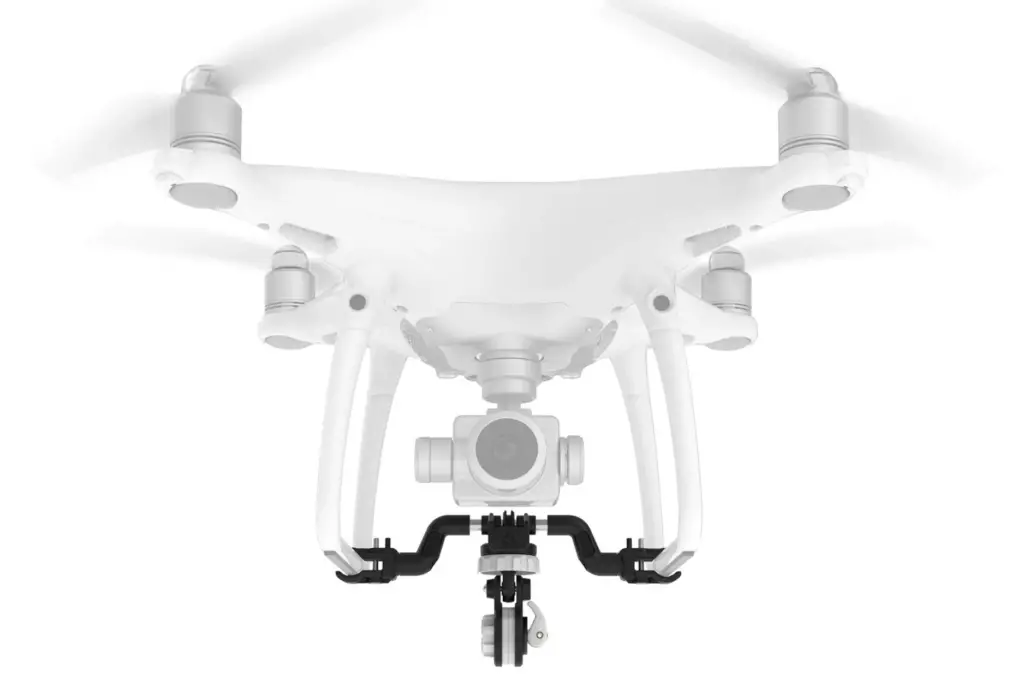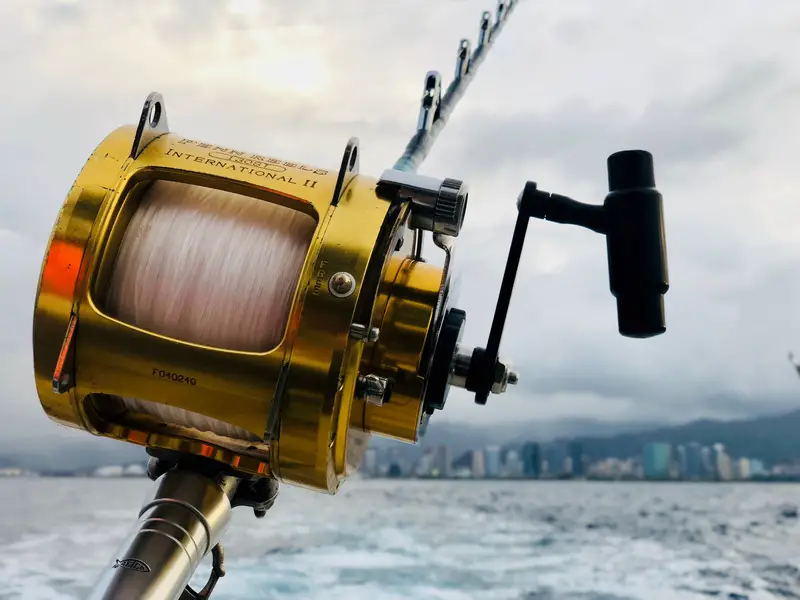Fishing has not changed much in the last few thousand years. Fisherman bait a hook on a line and cast it into the water hoping for the fish to bite. As we have seen with countless other items in this decade, innovation is changing the game.
Drones are now providing better solutions to multiple industries and one of these includes fishing. But How Does Drone Fishing Work? Drone Fishing works by utilizing a drone to carry ones hook and bait out to a desired location where it can be dropped strategically.
Today, we’ll take a deep dive into all things involving drones and fishing, and we’ll try to answer all the other questions that go along with it.
What Is Drone Fishing?
If you think about it, you’ll find that drone fishing is quite similar to balloon fishing.
Balloon fishing is when fishermen use balloons to lift their bait and toss it far away from their boat, instead of simply dropping the bait and motoring away.
Drone fishing works the same way, except you replace the balloon with a drone.
A drone allows for more precision and flexibility when fishing. Some drones are even capable of dropping your bait up to half a mile from your boat.
Both balloon and drone fishing employ the use of a rig and delivery method. This is unlike traditional fishing, which relies on casting action.
A rig and delivery can be a huge advantage. It gives you access to up to 500 meters. At such distances, your angler gains the ability to target deeper waters and larger fish!
This method of using the drone to carry your hook and bait to a desired location before dropping is the most common form of drone fishing. However, people have also used the drone itself to catch smaller fish by not allowing the line to drop and using the drone to actually catch and pull the fish in. This method only works for smaller fish though!
Why Is Drone Fishing So Appealing?
Some people will always insist on traditional fishing as the only “true” way of fishing. Whatever the case is, you can’t deny the massive appeal of drone fishing.
People have been trying it and having massive success with it. Having a drone doesn’t just take a lot of the necessary effort out of manual fishing. It’s also ideal for those who are disabled. If someone is in a wheelchair, it could be a good idea to consider drone fishing.
For starters, drone fishing casting stretches your reach. The only thing that limits your cast is your line.
Here’s the best thing about drones: they let you spy on fish. Equipped with high-quality cameras, drones can let you scan the water for hours. You can study the water for certain species, baitfish, or even just current. Then you can strategically drop the bait directly in front of the nose of the exact fish you want.
There’s also the financial aspect of drone fishing: the whole thing is significantly more affordable than buying and maintaining a boat. A boat may increase your range by allowing you to travel deeper into the ocean but a drone will allow you to get a great range off the coast for a fraction of the cost.
Drones can also pull. However, since they’re not very large, they’re not able to pull huge fish. However, this useful feature can come in handy when you’re fishing in a shallow lake. And since you can scout for fishing hotspots, you can drop your bait right where your target is.
Who Does it Best?
A group in Wales went on the youtube channel ifishtv and showcased drone fishing in a great video. Check it out below. They use a great product called the Skyrigger to carry the hook and bait. First he goes out and scans the waters for their target fish, Long-Tail Tuna. Once found they move along shore and set up the drone. Skip 4 minutes in to the video to see this. Then they fly the hook out and drop it. Wham! Straight away the tuna bites and pulls the line off the Skyrigger. The exciting battle to land the Tuna ensues…
People’s Success with Drone Fishing
Farmer Derek knows one thing or two about drone fishing. For starters, he pioneered it. In 2015, he filmed himself catching a small fish with his drone.
In the video, Klingenberg uses a DJI Phantom to catch fish. He used fake work as bait, waiting for ten minutes until he snagged a fish. He then successfully managed to pull his game out of the water using a line and a hook attached to his drone.
While Klingenberg might not have been the first person to go drone fishing, he certainly contributed to the activity’s popularity. As of now, his video has gathered more than 2 million views.
Drone Fishing Regulations
In the US, the Federal Aviation Association (FAA) has dictated several regulations regarding owning and operating drones. However, they do not yet have any specific laws that directly pertain to fishing.
These regulations differ depending on commercial and recreational use. In some ways, recreational use has less strict regulations.
Whether you’re using a commercial or recreational drone, you must register with the FAA. You also have to put your registration number on your done, and keep your registration papers on you.
One rule you must keep in mind is the 400 feet rule: when flying, you must keep your drone under 400 feet.
You must also abide by the line of sight rule. This rule requires you to keep your drone within your line of sight at all times. And one to keep in mind when drone fishing is that you cannot fly over large groups of people. So if there is a crowd on the beach I would not recommend flying over them with a fish hook. Use common sense.
In addition to federal regulations, most states have their own drone regulations. Here are the minority that don’t:
- Massachusetts
- Missouri
- Nebraska
- New York
- Ohio
- North Carolina
- Alabama
What Makes a Good Fishing Drone?
The money that a fishing drone costs is no joke. It’s why you must be careful about the selection process.
For starters, avoid buying any fishing drone under $500 (unless it’s used.) Most drones under $500 tend to have either short battery life or a weak lifting capability.
Realistically, your drone should cost somewhere between $500 and $1000.
Here are three things to look for in every fishing drone:
Battery Life
Battery life is critical when it comes to purchasing a fishing drone. If you’re looking to drop bait far from your boat, then having a reliable battery life is a must. Some batteries last up to 31 minutes, allowing the drone to cross the wide distance and return.
It’s also important to keep at least two spare batteries when drone fishing. Chargers are fine, but it can take up to two hours to get a full charge.

The prices of batteries are dependent on the drone. Typically, they vary between $50 and $150.
Range
Pilot error is one of the most common causes of drone crashes and drone loss. Another is range: a lot of pilots forget to consider range when selecting a drone, which is a critical mistake.
If you don’t know your drone’s range, you could fly it beyond its limit. You’ll end up losing your connection and possibly losing your drone.
Nowadays, drones are only widening their range. There are a couple of sophisticated drones on the market that boast an impressive range of 10 km.

Most of these drones also feature a 30-minute flight time, so you’re getting a good range and decent battery life all in one.
Return-to-Home Function
All good drones, whether they’re made for fishing or not, should feature a return-to-home function.
A return-to-home function is a useful little autonomous feature that, when activated, returns the drone to the location from where it took off. This function is triggered when the battery runs low, or when the connection is lost.
However, there’s a mistake many people make when drone fishing. Instead of setting the function to the controller, many set it to the take-off location.
Boats are constantly moving. Unless you want your drone landing in water, set the RTH function to the controller, so it adjusts yourself to your location.
Drone Bait Release Mechanisms
Bait release mechanisms are some of the most critical aspects of drone fishing. These mechanisms are divided into three groups: electronic, mechanical, and hybrid.
Electronic Bait Release Mechanism
You’ll find electronic bait release mechanisms on waterproof drones. Nine times out of ten, they’re attached to the drone through a zip tie or O Rings.
Most electronic bait release mechanisms have a switch. This switch is activated by a light sensor, which is fixed to the drone’s light. You can turn the drone’s light off and on through the remote control.
Naturally, electronic bait release mechanisms require constant charging, as they use a lot of battery.
Checkout the Gannet X Sport release system here – https://dronefishing.com/collections/all-products/products/gannet-x-sport

This release system will run you about $200 but gives you the most control over how your line is released.
Mechanical Bait Release Mechanism
Compared to its counterparts, a mechanical bait release mechanism is the most reliable to use.
Unlike an electronic bait release mechanism, it isn’t threatened by bird life. Any line snag will automatically cause the line to let go, avoiding any unnecessary crashes.
The simplest of designs is just a metal curved scoop hook that the line slides over. It stays on as long as the drone flies forwards. Once it reaches the intended destination it simply turns around backwards and lets the line slide off. You cannot lower the line into the water with this, because if you do a large fish might pull your drone down in the water.
That is why the down rigger clips style is more popular or a mechanical bait release mechanism.
Mechanical bait release mechanisms offer you two options:
- Adjustable tension
- Pre-set tension
Pre-set tension would involve just a single down rigger clip that you can test the strength it takes to pull the line out and get an idea for what you need it for.
Adjustable tension release clips suffer from the same downsides as electronic bait release mechanisms. Over-tension could cause a lot of issues, as well as forgetting to adjust the tension accordingly.
If you’re using an adjustable tension release clip, it’s important to use a standard diameter line. Its inclusion in a mechanical bait release mechanism will make it much safer.
The Skyrigger is an adjustable tension clip and was the device used in the ifishtv video above to catch the Tuna. – https://seaulcer.com/products/sky-rigger

Hybrid Bait Release Mechanism
As you can tell by the name, a hybrid bait release mechanism is a mix of two mechanisms: electronic and mechanical.
They can be incredibly useful and convenient. However, they’re often too expensive.
Hybrid bait release mechanisms can also be too heavy, which decreases the load-carrying capability. Their weight can also decrease battery life.
Catching the Fish and Letting them Out
Catching fish with a drone is no hard task. Rig your fishing drone so that it carries a downrigger clip, and experiment until you feel confident in your abilities. Make sure the clip does not impede any of the sensors on the bottom of your drone. That could prove disastrous if the clip shifted over a sensor midflight over the ocean and forced a mid-flight landing.
By rigging your fishing drone, you’ll start to get a feel of the clip’s tension. See how far you can fly the line before it reaches its limit. Mess around and adjust accordingly; the drone should be able to take the line at least 1000 feet before the clip lets go.
When you finally see fish and decide on a target, lower the bait. If you run into a problem or the bait doesn’t drop, get your drone back to the boat and give it a quick examination.
And then, you flip the bar down over your reel. This then forces the line to pull out of the clip. Or depending on the system spin your drone so it is facing backward and let the line slip off.
Conclusion
Drone fishing is popular for a lot of reasons: it’s user-friendly, convenient, and quick. Piloting a drone is no hard task, and catching fish with it certainly isn’t either with some practice.

In the end, it doesn’t matter how effortless it is. Whether you’re fishing using a balloon, a kite, or a drone, the most important thing is that you enjoy your time.
Have fun fishing!
